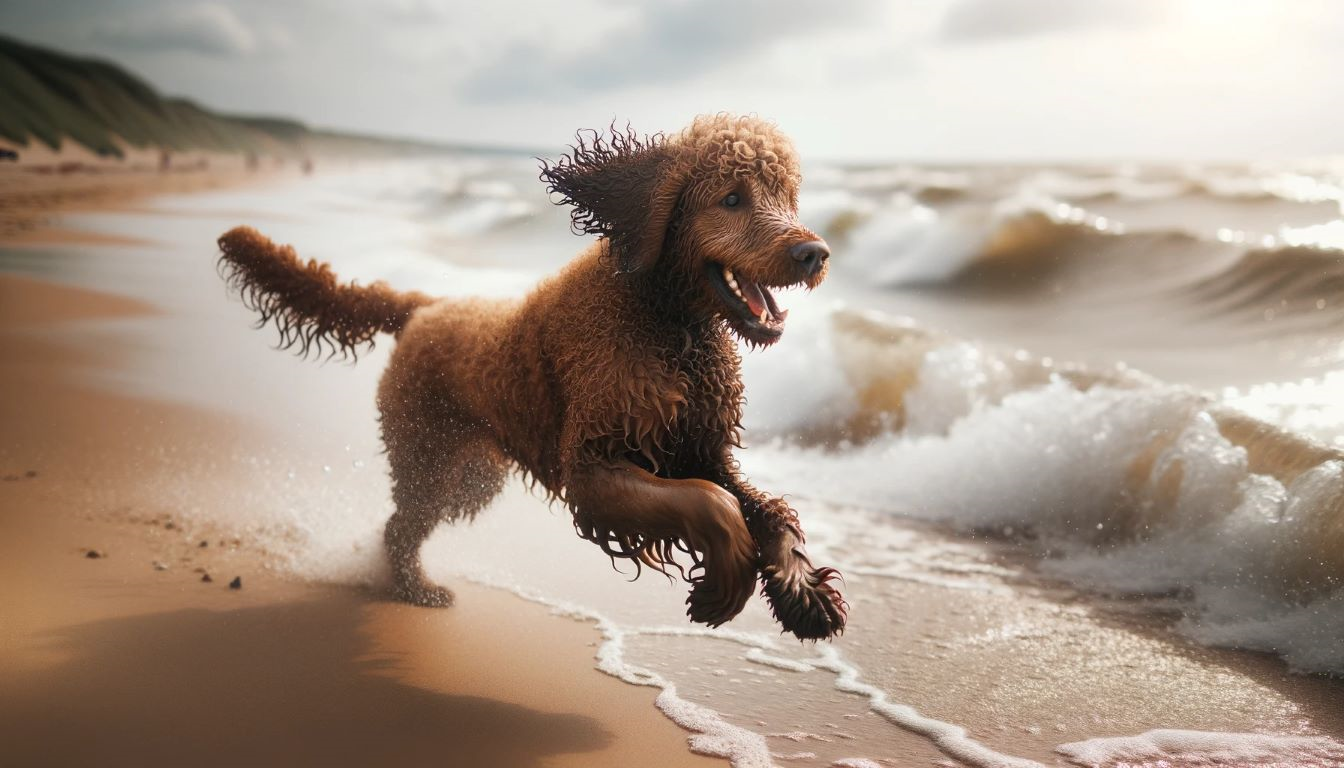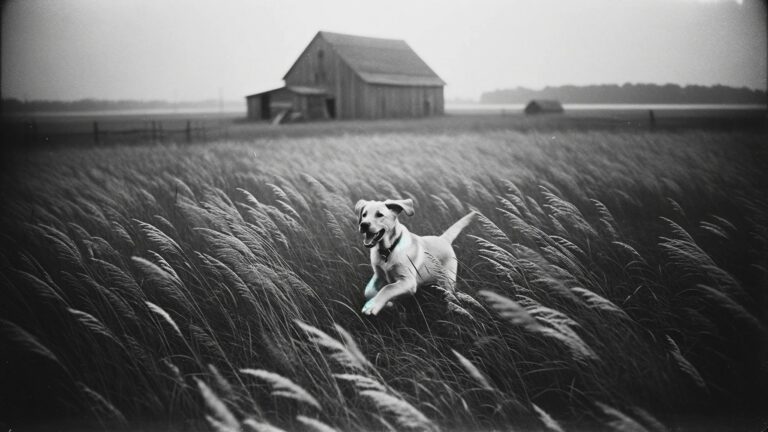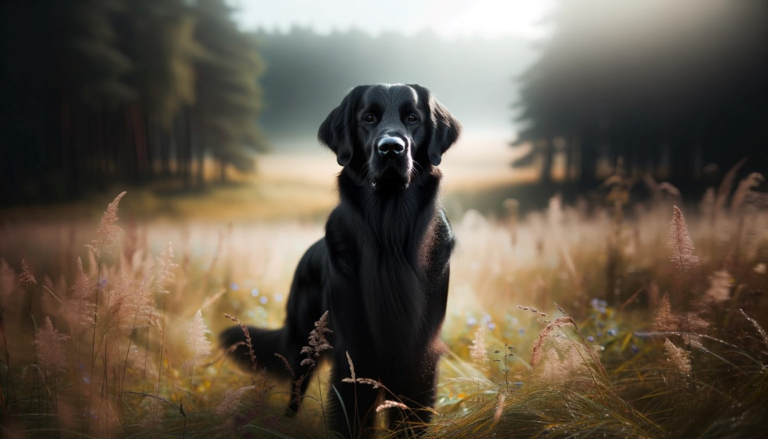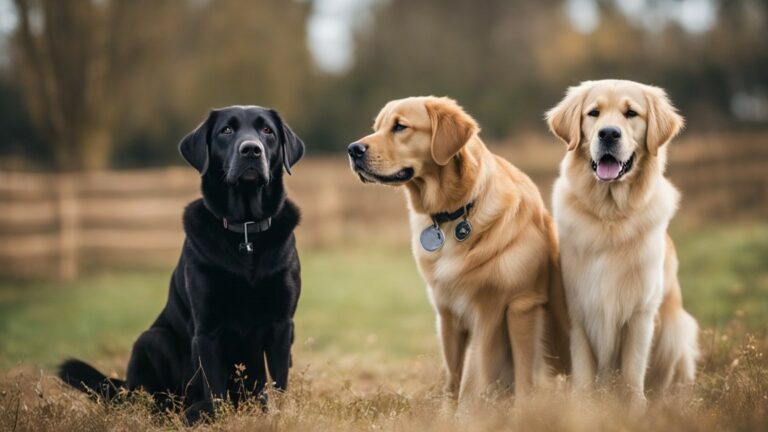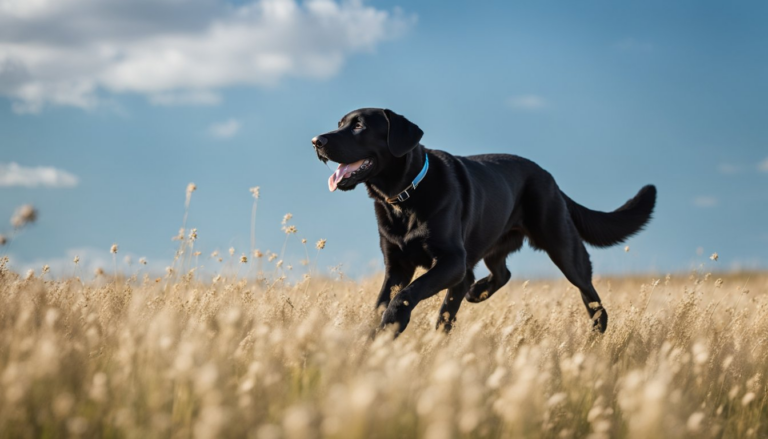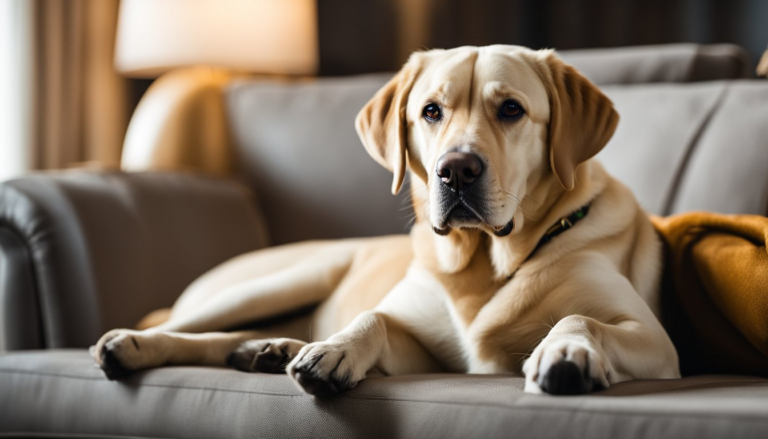Curly-Coated Retriever Breed Guide: Deep Dive into This Athletic Breed
Curly-Coated Retrievers are a unique and remarkable breed, known for their distinctive curly coat and athletic abilities. As one of the oldest retriever breeds, they have a rich history and a strong work ethic, making them excellent companions for active families and hunters alike.
These intelligent dogs possess a friendly and loyal temperament, coupled with a high energy level that requires regular exercise and mental stimulation.
Over the years, Curly-Coated Retrievers have proven themselves as versatile working dogs, excelling in various activities such as hunting, retrieving, and agility.
Their sociable nature and adaptability make them suitable for a variety of living conditions, provided they receive adequate attention and care. Owners must also be mindful of potential health concerns and grooming needs to ensure their Curly-Coated Retrievers lead a happy and healthy life.
Key Takeaways
- Curly-Coated Retrievers are known for their unique coat and athleticism, making them excellent companions for active families.
- As versatile working dogs, they excel in activities such as hunting, retrieving, and agility.
- Proper care, including attention to health concerns and grooming needs, is essential for maintaining a happy and healthy life for this breed.
Breed History and Origin
Development and Origins
The Curly-Coated Retriever is one of the oldest and most distinctive retriever breeds, with its origins dating back to 19th century England. Thought to be a result of crosses between the now-extinct English Water Spaniel, Irish Water Spaniel, and other retrievers, this breed boasts a unique curly coat that sets it apart from other retrievers.
As the breed evolved over time, it maintained its distinctive curly coat, which provided protection from harsh weather conditions and rough terrain during hunting activities. Their increasing popularity in the 1800s led to the establishment of the breed standard, ensuring consistency in physical attributes and temperament.
Original Purpose
Originally bred for hunting upland birds and waterfowl, the Curly-Coated Retriever excelled in retrieving game both on land and in water. Their intelligence, perseverance, and strong swimming abilities made them invaluable partners for hunters in search of waterfowl, while their unique curly coat served as a natural barrier against water and environmental hazards.
The breed’s tireless work ethic and exceptional retrieving skills garnered them a strong reputation as reliable hunting companions. Today, the Curly-Coated Retriever remains a skilled hunting and retrieving breed but also enjoys the role of a beloved family pet, offering loyalty and affection to their human companions.
The Curly-Coated Retriever has a rich history rooted in 19th century England, with a development that involved various retriever breeds and the now-extinct English Water Spaniel. Their original purpose as proficient hunting companions has evolved over time, but their unique attributes and remarkable ability to adapt make them a continually popular breed choice for hunting enthusiasts and families alike.
Physical Characteristics
Size
The Curly-Coated Retriever is a large and athletic breed. On average, males stand at a height of 25 to 27 inches, while females are slightly smaller with a height of 23 to 25 inches. Males usually weigh between 70 and 100 pounds, and females weigh between 55 and 85 pounds.This size contributes to their strong and agile body, making them excellent working and hunting dogs.
Coat
One of the most distinguishing features of the Curly-Coated Retriever is their tight, water-resistant curls. The curly coat is dense and covers their entire body, including their tail. The curls are formed close to the skin, which provides insulation and protection from water and cold weather.
Grooming needs for this breed are moderate. It’s important to brush their coat at least once a week to prevent matting and to remove any loose hair. They will also require occasional baths to keep their coat clean and odor-free. The Curly-Coated Retriever’s coat is known for being low-shedding, making them a desirable choice for those with allergies. The coat is typically either solid black or liver-colored.
Lifespan
The average life expectancy of a Curly-Coated Retriever is 10 to 12 years. Maintaining a healthy lifestyle with regular exercise, a balanced diet, and proper veterinary care can help ensure your Curly-Coated Retriever lives a long and happy life.
Distinctive Features

In addition to their unique curly coat, Curly-Coated Retrievers have a distinctive wedge-shaped head with a long and straight muzzle. Their almond-shaped eyes are usually dark brown or black, adding to their intelligent and attentive expression. Their tail is also noteworthy as it’s straight and covered in curls, giving them a striking appearance.
Temperament and Personality
General Disposition
Curly-Coated Retrievers are known to be intelligent, confident, and independent dogs with a pleasant temperament. They are moderately energetic and enjoy staying active, which makes them well-suited for families with an active lifestyle.
These retrievers are affectionate and loyal towards their family members, but can be reserved or shy around strangers. Their friendly nature also allows them to get along well with other pets in the household.
Behavior
When it comes to interactions with children, other pets, and strangers, the Curly-Coated Retriever’s behavior can vary depending on their upbringing and socialization. In general, they tend to be good with children, especially if they grow up around them.
Their patience and gentle nature make them suitable playmates for kids, but it’s a good thing also to teach children how to interact with the dog safely and respectfully.
When meeting new people, Curly-Coated Retrievers can be reserved or shy at first. Early socialization, repeated exposure to new experiences, and positive reinforcement help these dogs become more comfortable and confident around strangers.
In terms of other pets, Curly-Coated Retrievers typically coexist well with them, though their hunting instincts might lead to chasing smaller animals. It’s a good thing to introduce them to other household pets early on to build positive relationships.
Trainability

Curly-Coated Retrievers are intelligent and keen learners, which makes them relatively easy to train. However, their independent streak can sometimes make them appear stubborn or uncooperative. Patience, consistency, and positive reinforcement are needed when training these dogs, as they respond well to rewards-based techniques.
It’s important to begin training and socializing Curly-Coated Retrievers from an early age, as their inherent confidence and independence can make it more challenging to modify their behavior later in life.
To ensure the development of a well-adjusted and obedient dog, provide firm guidance, clear instructions, and boundaries while maintaining a kind and supportive attitude.
Health and Wellness

Common Health Issues
Curly-Coated Retrievers are generally healthy, active dogs. However, some genetic predispositions and health concerns are specific to this breed. These dogs are prone to hip and elbow dysplasia, which affects their joint health.
Regular check-ups can help in early detection and treatment of these issues. They may also experience health issues such as bloat, which can be life-threatening. Proper feeding and nutrition can help in reducing its risk. Be sure to consult with a veterinarian to maintain your retriever’s health and discover any predispositions.
Health Screenings
To ensure the overall health of a Curly-Coated Retriever, regular health screenings by a veterinarian are indispensable. Recommended tests include hip and elbow scores, eye examinations, and genetic testing for conditions such as cerebellar abiotrophy and epilepsy. These health screenings help to detect issues early and provide appropriate treatments for conditions specific to the breed.
Diet and Nutrition
A well-balanced diet is a big contributor for the health and wellness of a Curly-Coated Retriever. The breed’s diet should consist of high-quality commercial dog food or a home-cooked meal approved by a veterinarian. Dietary needs vary with age, weight, and activity level, so make sure to consult with a veterinarian to determine the appropriate feeding plan for your individual dog.
- Feed puppies and young retrievers 3 to 4 times a day.
- For adult retrievers, reduce feeding to two meals a day.
- Monitor your retriever’s weight and adjust the food quantity accordingly.
Exercise Needs
As energetic and playful dogs, Curly-Coated Retrievers require daily exercise like other retriever type to maintain their physical and mental well-being. These dogs thrive when engaging in activities such as running, swimming, or playing fetch. They also make excellent companions for outdoor activities such as hiking and jogging. A healthy exercise routine for this breed includes:
- Daily walks of at least 30 minutes.
- Regular off-leash playtime in a secure area.
- Participation in dog sports, such as agility, tracking, or obedience competitions.
Remember to consult with a veterinarian to discuss the specific exercise needs of your Curly-Coated Retriever and ensure a happy and healthy life for your canine companion.
Training and Behavior
Early Socialization

It is urgent to start socializing Curly-Coated Retrievers as puppies. Early socialization can help them develop a well-rounded and balanced behavior when they grow into adulthood. Puppies should be exposed to various environments, people, and other animals to build confidence and adaptability.
Gradually introducing them to new experiences, such as car rides, meeting strangers, and interacting with other dogs, is a big help for developing a well-mannered Curly-Coated Retriever.
Training Techniques
Training Curly-Coated Retrievers can be both rewarding and challenging due to their independent and intelligent nature. Consistency and patience are needed when using effective training methods for this breed. Positive reinforcement, such as treats, praise, or playtime, can motivate them to learn and obey commands.
It will also be helpful to establish clear boundaries and expectations from the beginning. For example, teaching them to walk on a loose leash and basic obedience commands like “sit,” “stay,” and “come” will help maintain control and strengthen the relationship between the dog and its owner. Additionally, engaging in activities that challenge their mental and physical abilities, such as agility training or scent work, can help channel their energy and intelligence.
Behavioral Challenges
Curly-Coated Retrievers may face some common behavioral issues, such as stubbornness or excessive barking. Addressing these issues requires patience, consistency, and understanding of the dog’s character. For instance, stubbornness can be managed by ensuring that the dog understands the command and providing consistent reinforcement for compliance.
In the case of excessive barking, identifying the underlying cause and addressing it is necessary. This breed is sensitive to their environment and may bark due to boredom, anxiety, or alertness. To alleviate boredom, providing ample physical exercise and mental stimulation through interactive games or training sessions can help. If the dog is barking due to anxiety or fear, working with a professional dog trainer or behaviorist to address these issues is recommended.
By understanding and effectively addressing the Curly-Coated Retriever’s unique behavioral challenges, owners can create a strong bond with their dogs while promoting a well-behaved and happy pet.
Working and Activities
Historical Role
The Curly-Coated Retriever has a rich history as a hunting and retrieving dog. This breed was developed in England in the 19th century, where it was used to retrieve waterfowl and game birds in various terrains. Their unique water-resistant curly coat allowed them to work in cold and wet environments, giving them an advantage over other retriever breeds like the Labrador.
Modern Roles
Today, the Curly-Coated Retriever continues to excel in retrieving and hunting activities. Though not as popular as the Labrador, this breed remains a part of the sporting group and participates in various dog sports such as field trials, obedience competitions, and agility events. They have also proven themselves to be capable in activities like dock diving, displaying their natural athleticism and affinity for water.
Mental and Physical Stimulation
Keeping a Curly-Coated Retriever mentally and physically engaged is essential for their well-being. Regular exercise, such as daily walks and playtime, is important to meet their energy requirements. Additionally, their working and retrieving instincts can be satisfied through interactive games like fetch, hide and seek, and scent work.
To further challenge their mental abilities, Curly-Coated Retrievers can also participate in dog sports like agility, nose work, and rally obedience. These activities provide them with a sense of accomplishment and help strengthen the bond between the dog and its owner.
Overall, maintaining a balance of physical and mental stimulation is beneficial for the happiness and health of a Curly-Coated Retriever. By engaging them in activities they naturally excel in, owners can ensure their dog remains content and well-adjusted.
Care and Grooming

Coat Care
The unique curly coat of a Curly-Coated Retriever requires special attention to ensure it remains healthy and clean. Regular brushing helps prevent matting and distributes natural oils, which aid in keeping the coat water-repellent. Use a slicker brush or a rubber curry brush when grooming their specific coat type. For a well-groomed appearance, trim any excess hair around the ears, tail, and feet areas.
Ear, Teeth, and Nail Care
Curly-Coated Retrievers, like other breeds, should have regular ear, teeth, and nail care. Check the dog’s ears weekly for any signs of infection or irritation, and clean them using a soft, damp cloth or a cotton ball with an ear cleaning solution. For dental health, brush their teeth with a canine toothpaste and toothbrush at least two to three times a week. Additionally, maintain their nails by trimming them monthly using a guillotine or scissor-type nail clipper suitable for the dog’s size.
Shedding
Curly-Coated Retrievers typically shed moderately. Intensified shedding may occur once or twice a year, during which the curly coat may become looser. It is necessary to increase grooming frequency during these periods to manage shedding more effectively and help remove dead hair.
Brush their coat more regularly during shedding seasons and ensure that the grooming tools are appropriate for the dog’s coat type. With proper care and grooming, a Curly-Coated Retriever’s coat will remain healthy, clean, and attractive, protecting them against harsh weather conditions while maintaining their unique curly appearance.
Living Conditions
Housing
Curly-Coated Retrievers are accommodating dogs that can adapt well to different living conditions. They can thrive in a home with a spacious yard where they have room to play and exercise. A fenced-in area is ideal to ensure safety and prevent them from wandering off.
These dogs can also adapt to living in smaller spaces such as apartments, provided they are given ample opportunities for exercise and mental stimulation. However, it is significant to note that regular exercise is necessary for their well-being, regardless of their living situation.
Outdoor Needs
Curly-Coats are energetic dogs that require plenty of open spaces for play and exercise. They are known to be excellent swimmers and enjoy playing fetch in water or on land. Providing them with access to a variety of outdoor activities and off-leash exploration can greatly contribute to their overall physical and mental health. Some suggestions for outdoor activities include:
- Long walks or jogs
- Fetch games with balls or Frisbees
- Agility training
- Group play sessions with other dogs
Always remember that regular exercise will help keep your Curly-Coated Retriever healthy and happy.
Climate Considerations
These dogs have a unique, water-resistant coat that makes them fairly adaptable to different weather conditions. Their curly coat provides insulation in colder climates, while the somewhat loose curls give them some breathability during warmer months.
However, it is necessary to take precautionary measures to ensure their comfort and safety in extreme weather conditions. In hot weather, provide them with ample shade, water, and avoid overexertion during the warmest hours of the day. In cold climates, make sure they have a warm place to rest after being outside.
By considering these aspects of living conditions, Curly-Coated Retrievers can thrive and be well-suited companions for a variety of lifestyles. Just remember to provide them with adequate exercise, appropriate housing, and take their adaptability to different climates into account.
Adoption and Purchase
Considerations
Before getting a Curly-Coated Retriever, it is significant to know the needs and requirements of this energetic and intelligent breed. They require regular exercise and mental stimulation, which means they may not be suitable for all households.
They are generally a healthy breed but can be prone to certain health issues like hip dysplasia and eye problems. Keep in mind that Curly-Coated Retrievers may be more challenging to find than other breeds, as they are less common in countries like the United States, Australia, and New Zealand.
Reputable Breeders
To ensure you’re getting a healthy and well-bred Curly-Coated Retriever, it’s a requisite to choose a reputable breeder. A good breeder will prioritize the health and temperament of their dogs and should be able to provide information about the puppy’s lineage, health clearances, and breed-specific testing.
They should also allow you to visit their facility and meet the parent dogs to get a sense of their temperament and living conditions. Additionally, a reputable breeder should be able and willing to answer any questions or concerns you may have about the breed’s characteristics and care requirements.
Rescue Organizations
If you’re interested in adopting a Curly-Coated Retriever, there are breed-specific rescue organizations that can help you find a dog in need of a loving home. These organizations often have stringent adoption processes, including home checks and interviews, to ensure that the dog is placed in a suitable environment.
Adopting from a rescue may take longer than purchasing from a breeder, but it can be a rewarding experience knowing that you’ve provided a home for a dog in need. Keep in mind that rescue dogs may have special requirements or need additional care and training due to their past experiences.
However, with patience and dedication, you can help your adopted Curly-Coated Retriever become a loving and loyal family member.
Fun Facts and Trivia
Unique Characteristics
Curly-Coated Retrievers are known for their distinctive tight curls that cover their bodies. These curls act as a protective layer, making them excellent swimmers and allowing them to work in water with ease. The breed is also somewhat rare, which contributes to their unique status in the dog world.
The breed’s hypoallergenic nature is another distinctive factor, with the curls trapping dander and resulting in less shedding. This makes them a more suitable option for allergy sufferers. Curly-Coated Retrievers have a friendly and strong personality, which further adds to their appeal.
Their athleticism and love for water make them great swimmers, and they are often used for hunting and retrieving waterfowl. Generally, the breed is characterized by a mix of strength and elegance, setting them apart from other retrievers.
Famous Curly-Coated Retrievers
Curly-Coated Retrievers have not often been in the limelight, but their unique appearance and strong personalities make them stand out when they do appear in the media or dog shows. One of the most famous Curly-Coated Retrievers was Nellie, who became a champion in the show ring and was known for her exceptional swimming abilities. Nellie’s success in the show circuit contributed to the increasing popularity of the breed during her time.
Though not a household name, Curly-Coated Retrievers have captured the hearts of their owners, and their presence in dog shows and competitions highlights their unique charm and athleticism.
Frequently Asked Questions
What is the temperament of a Curly-Coated Retriever?
Curly-Coated Retrievers are known for their friendly, intelligent, and confident nature. These dogs typically get along well with other animals and are gentle with children. They are also highly trainable, making them suitable for various activities such as hunting, agility, and obedience.
How long do Curly-Coated Retrievers typically live?
The average lifespan of a Curly-Coated Retriever is around 10 to 12 years. However, with proper care, regular exercise, and a healthy diet, some of these dogs can live even longer.
What is the care required for a Curly-Coated Retriever’s coat?
Curly-Coated Retrievers have a unique, low-maintenance coat that requires minimal grooming. Regular brushing can help remove loose hair and keep their curls looking neat. Additionally, occasional baths will keep their coat clean and healthy. It’s important to note that this breed’s coat may have some hair coat abnormalities, but they are not common.
Are Curly-Coated Retrievers suitable for first-time dog owners?
Curly-Coated Retrievers can be a good choice for first-time dog owners due to their friendly and trainable nature. However, this breed requires consistent training and socialization from a young age to prevent potential behavioral issues. Prospective owners should be prepared to commit time and effort toward proper training and exercise.
What are some common health issues in Curly-Coated Retrievers?
Curly-Coated Retrievers can be prone to certain health issues, such as hip dysplasia, progressive retinal atrophy (PRA), and ear infections. Regular vet check-ups, proper nutrition, and maintaining a healthy weight can help prevent or manage these health problems. Responsible breeding practices are important in limiting the risk of hereditary conditions.
Are there any popular cross breeds involving Curly-Coated Retrievers?
While there aren’t many specific popular crossbreeds involving Curly-Coated Retrievers, they have been occasionally crossed with other breeds, such as Golden Retrievers and Labradors, for the purpose of guide dog breeding programs. However, it’s necessary to research any crossbreed thoroughly and choose a reputable breeder to ensure the health and temperament of the dog.
Conclusion
The Curly-Coated Retriever is a truly unique and endearing breed, known for its distinctive curly coat and adaptability. These dogs excel in various activities due to their intelligence, athleticism, and friendly nature. Their versatility and loyalty make them perfect companions for families, hunters, and outdoor enthusiasts alike.
In addition to their exceptional ability in the field, Curly-Coated Retrievers possess a strong work ethic and adapt well to various situations. These qualities contribute to their success as service dogs, therapy animals, and search-and-rescue workers. Whatever their role, Curly-Coated Retrievers prove to be committed, energetic, and loving companions.

